NVIDIA's GeForce GTX 1080 is the GPU upgrade you've been waiting for
It was built specifically with 4K and VR in mind.
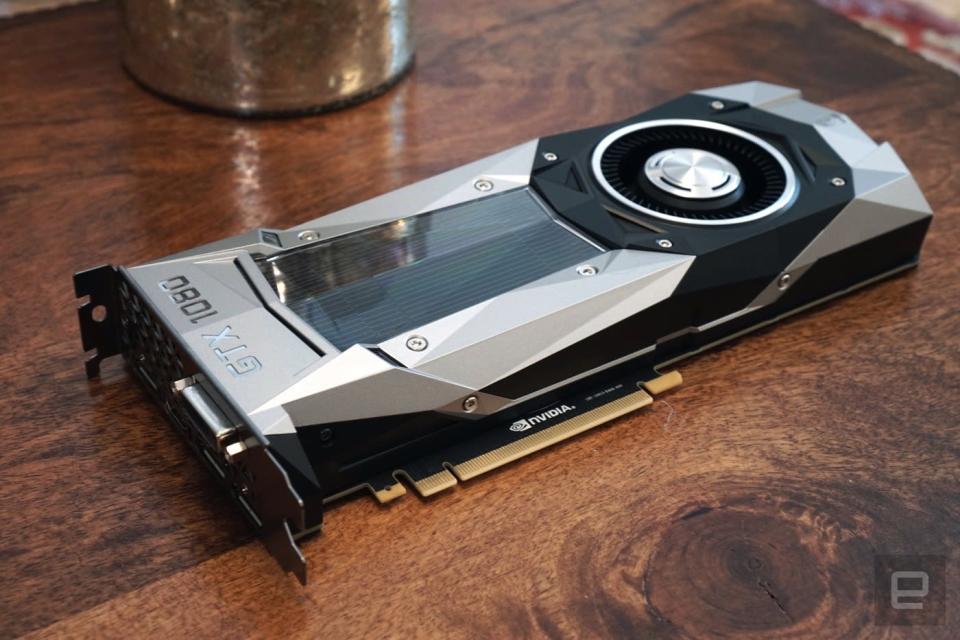
It's never been a better time to be a PC gamer. Hardware is getting both cheaper and more powerful, most big-budget console games are making it to PCs (where they also look better), and the rise of virtual reality offers a tempting upgrade target. NVIDIA, one of the pioneering graphics-card designers, is taking full advantage of this revitalized PC gaming market with the GeForce GTX 1080, its latest powerhouse GPU. It's the first consumer card built on the company's Pascal architecture, and, most intriguingly, NVIDIA claims the $599 video card ($699 for the special Founder's Edition) is faster than the Titan X, which goes for upward of $1,000. After testing it out over the past week, I can say the 1080 is clearly something special.
Hardware

I had the privilege of testing the Founder's Edition of the card, which is something unique for NVIDIA. Previously, the company released fairly plain reference editions of its cards, which would inevitably be one-upped by partners with more-elaborate cooling designs. But NVIDIA is positioning the GTX 1080 Founder's Edition as a premium offering. The company claims the materials used to build the card, including the aluminum vapor chamber cooler (a step up from plain-old air cooling) and more-efficient power components, justify its $100 premium. But that's a bit hard to stomach when its reference cards had similar cooler designs in the past.
NVIDIA went for a bit more flair this time around. The sharp angles around the 1080's cooler feel more reminiscent of a Ferrari than the company's past design. That's a fitting way to represent just how fast it is: It's capable of pumping out nine teraflops of computing power. The 1080 runs at 1,607MHz (up to 1,733MHz in boost mode) and packs in 8GB of Micron's new GDDR5X RAM. In comparison, last year's 980 Ti card clocked in at 1,000MHz with 6GB of standard GDDR5 memory. Unlike CPUs (which now reach into the 4GHz range), video cards haven't seen massive megahertz bumps over the years, so the 1080's numbers are seriously impressive.

You can chalk up much of the GTX 1080's upgrades to NVIDIA's new Pascal architecture. It first appeared on the P100 card for data crunchers, but this is the first time we've seen what it looks like in consumer hardware. The big benefit with Pascal is its new 16nm FinFET architecture (a type of 3D transistor technology). It allows NVIDIA to reach higher clock speeds as well as make the card much more power efficient.
In terms of connectivity, the 1080 Founder's Edition features three DisplayPort connections, one HDMI port and a single DVI socket. It would have been nice to see another HDMI port, but I'm sure there are plenty of professionals out there who are still running fancy monitors over DVI.
Setup
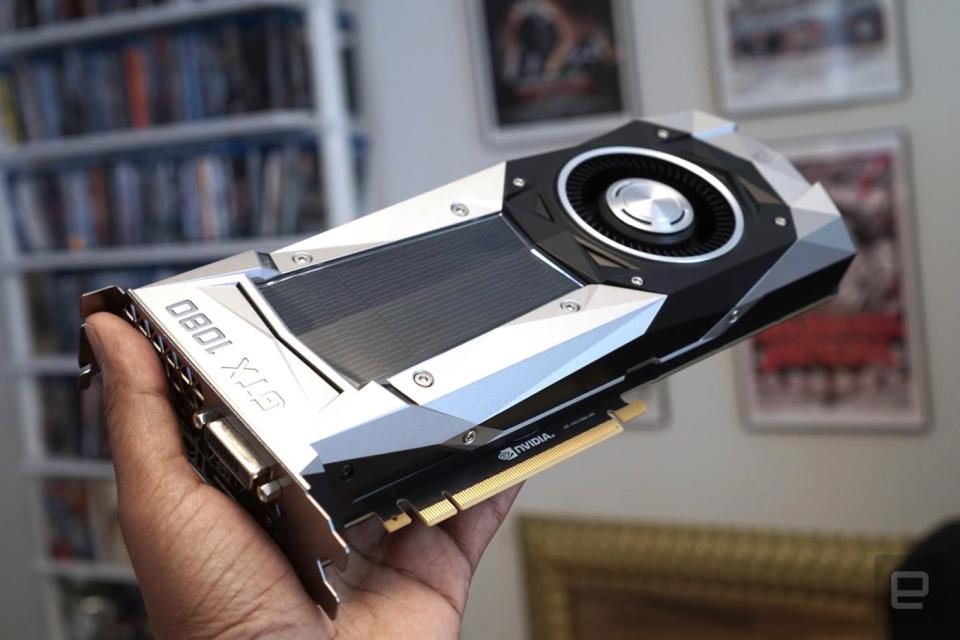
Getting the GTX 1080 up and running isn't any different than with your typical video card. It's a big piece of kit, so you'll want to make sure there's enough room in your case for it to fit, but otherwise it snaps right into a PCI-E slot and it's powered by a single 8-pin power connector. Unlike the Radeon R9 Fury X, which required me to move some case fans around to make room for its water cooler radiator, the GTX 1080 was a cinch to install. After grabbing some fresh drivers from NVIDIA (and making sure any traces of old drivers were gone for good), I was off to the benchmarking races.
Performance
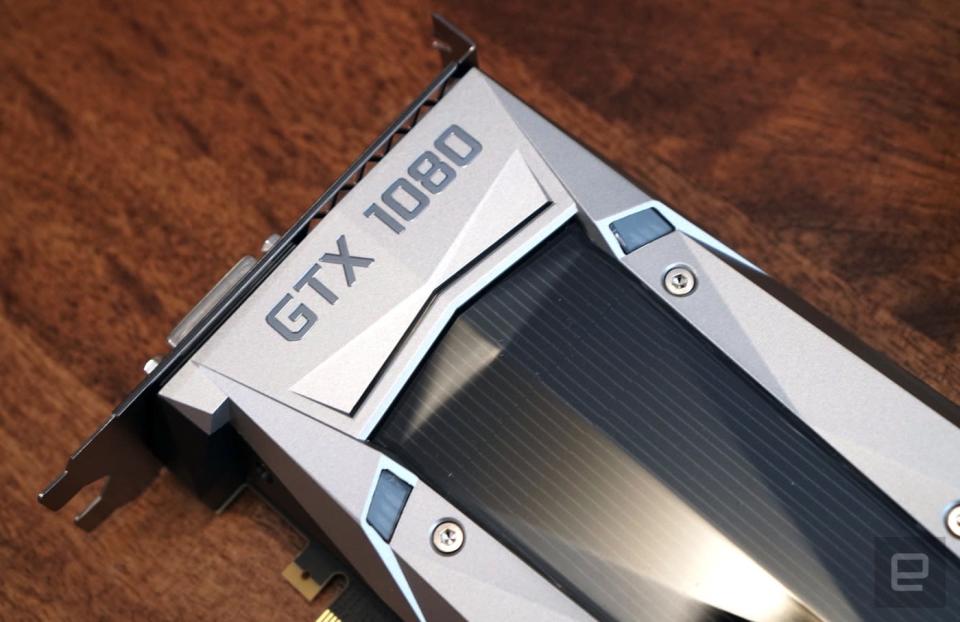
NVIDIA wasn't lying: The GTX 1080 is a beast. I only had the R9 Fury X to compare it to on my gaming rig (which consists of a 4GHz Core i7-4790K CPU, 16GB of 2400Mz DDR3 RAM and a 512GB Crucial MX100 SSD on a ASUS Z97-A motherboard), but that's a powerhouse GPU that easily keeps pace with the GTX 980 and Titan X. And for every major benchmark, the 1080 was significantly faster.
3DMark | 3DMark 11 | |
NVIDIA GeForce GTX 1080 | Standard 15,859/ Extreme 9,316/ Ultra 5,021 | X9,423 |
AMD R9 Fury X | Standard 13,337/ Extreme 7,249/ Ultra 3,899 | X,6457 |
In 3DMark online comparisons with similar systems, the 1080 was typically ranked better than 92 to 95 percent of results. It was only bested by scores from machines running multiple 980 and 980 Ti cards in SLI mode (which would also cost a lot more than the 1080 to put together).
Witcher 3 | Hitman | Fallout 4 | |
NVIDIA GeForce GTX 1080 | 43 | 48 | 54 |
AMD R9 Fury X | 35 | 38 | 42 |
Average FPS performance in 4K with all graphics set to maximum
Benchmarks are one thing, but I was more interested in how the GTX 1080 performs in actual games. And once again, it didn't disappoint. Compared to the R9 Fury X, it reached around 43 frames per second in the Witcher 3 while running in 4K with all the settings set to Ultra. That made the game much more playable in such a high resolution: The Fury X averaged around 35 fps, and it would sometimes dip below 30, which makes things unbearably jerky. For Hitman, the 1080 reached a smooth 48 fps on average, whereas the Fury X hovered around 38.
I was particularly impressed with the card's performance in Fallout 4 (after turning off that game's frame limiter). It was playable on the Fury X, reaching around 42 fps, but on the GTX 1080 it more often hovered between 50 and 55 fps in most environments. Sometimes it would shoot upward of 60 fps indoors, and in wide-open areas it would dip to 40 fps. That wouldn't make for the smoothest experience, but it's certainly a lot more playable in 4K.
Thanks to the elaborate heat sink design, the GTX 1080 Founder's Edition was also cooler than I expected. It idled at a mere 33c, and under full load it reached between 65c and 70c. I also had no trouble overclocking the GPU by 250MHz (reaching around 1.95GHz under load) and the memory by 200MHz without any significant temperature changes. NVIDIA reps managed to push the card past 2.1GHz during a stage demo without any additional cooling. If you're into overclocking, this card was basically made for you.
Last year I wasn't sold on the viability of 4K gaming -- if a $600 card like the R9 Fury X couldn't always handle it, why even bother? -- but the GTX 1080 actually makes it viable with a single card. But while it's nice to see significant progress in high-res gaming, I still prefer bumping down to a lower resolution like 2,560 x 1,440 to ensure a silky 60 fps experience. Most people wouldn't notice the marginal difference in rendering resolution, but they'd certainly pick out when frames start to stutter in 4K. (Check out this gallery for a look at the below screenshots in full 4K resolution.)
Even if you're not chasing 4K, a powerful card like the 1080 could be used to supersample games, which involves rendering them at a higher resolution than what's being shown on the screen to remove unsightly jagged lines. It's a technique that's fallen out of fashion in the PC gaming world, but now that cards have computing power to spare, it could be a smart way to make games look even better. With Hitman, I was able to get around 60 fps when running it at 2,560 x 1,440 with a 1.2X supersample. I couldn't see a huge difference without enabling the feature, but this is the sort of thing that some PC gamers might eat up.
When it comes to VR, the GTX 1080 doesn't feel significantly better than the R9 Fury X. That's partially because the Oculus Rift and HTC Vive run at a relatively low 1,200 x 1,080 pixel resolution for each eye display, which is significantly less sharp than the 1080p HD screens we've grown used to. You need to reach at least 90 fps in VR to make games look smooth, but that's not a tough target for the 1080 to reach at such a low resolution.
NVIDIA has also included some new technology, dubbed Simultaneous Multi-Projection, that makes the 1080 more efficient at displaying VR scenes than other cards. For example, it only needs to render a scene once to show it in VR, whereas other video cards have to do that work twice (once for each eye). The card is also much smarter about processing the pixels you actually need to see in a scene. These new innovations won't make a big impact on existing VR games, which don't need to be displayed in high resolutions, but they could be a big deal with next-generation headsets.
The competition
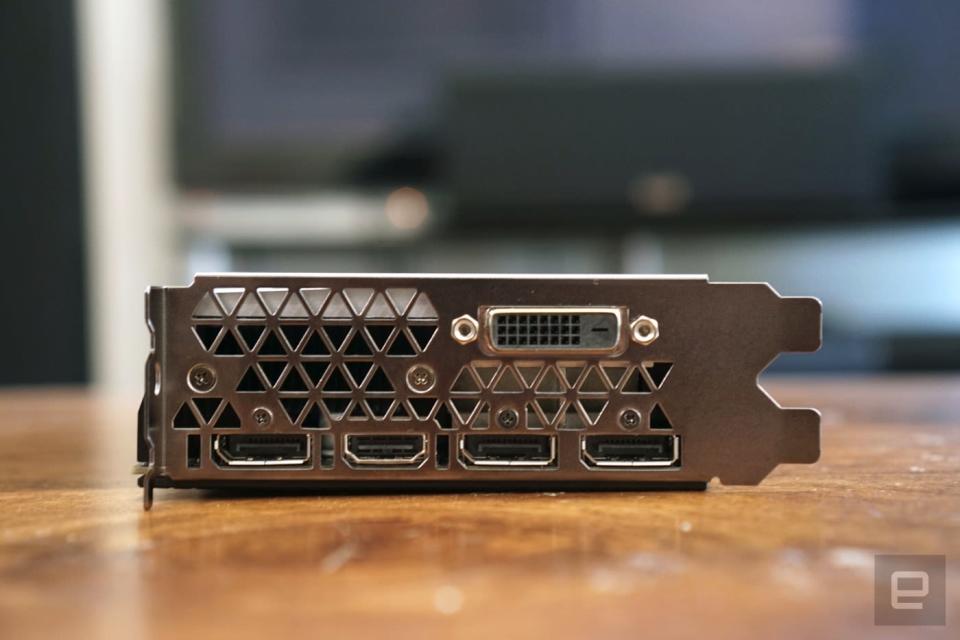
As great as the GTX 1080 is, most gamers will likely opt for its cheaper sibling, the $379 GTX 1070 ($449 for the Founders Edition). It's only slightly slower -- pumping out 6.5 teraflops instead of the 1080's 9 teraflops -- but NVIDIA says it's also "roughly" the same performance as the $1,000 Titan X. That's an insane cost-to-performance ratio, and it also leaves room for snapping up another (inevitably cheaper) 1070 in a year or so to bump your speeds up.
As is usually the case, there will also be plenty of competing GTX 1080 designs to choose from in the next few months. Those cards will likely come in closer to the $599 retail price NVIDIA is advertising rather than the $699 premium for the Founders Edition.
Normally I'd also urge you to look at previous-generation hardware as new gear comes in. But the 1070 and 1080 are such huge architectural leaps that it doesn't make sense for most people to consider a 970 or 980. If you're really trying to save money, a 970 for around $200 could be a decent deal in the future (they're still going for around $300). But you'd also regret that choice if you want to dabble in VR within the next year.
AMD has also shown off its next-generation graphics technology, Polaris, which promises to be just as power efficient as NVIDIA's Pascal. We still don't know what Polaris consumer cards will look like yet, so it might pay off to wait a few months before you decide on a new GPU.
Wrap-up
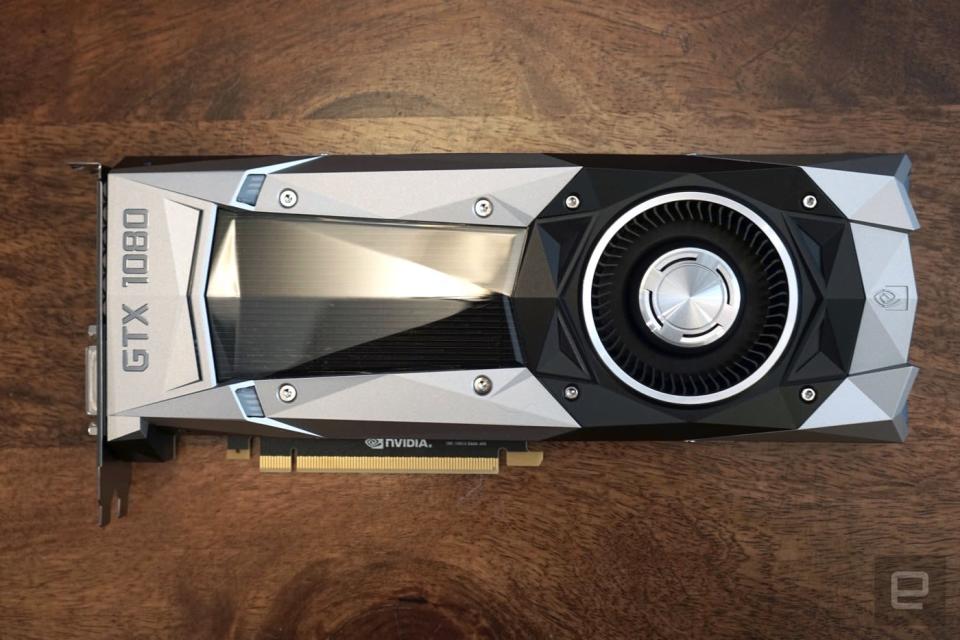
If you have the cash and need the most powerful video card on the market, you can't go wrong with the GTX 1080. It's built precisely for the things gamers are focused on today: 4K and VR. It's not just an incremental upgrade for NVIDIA: It's a dramatic leap forward.



















